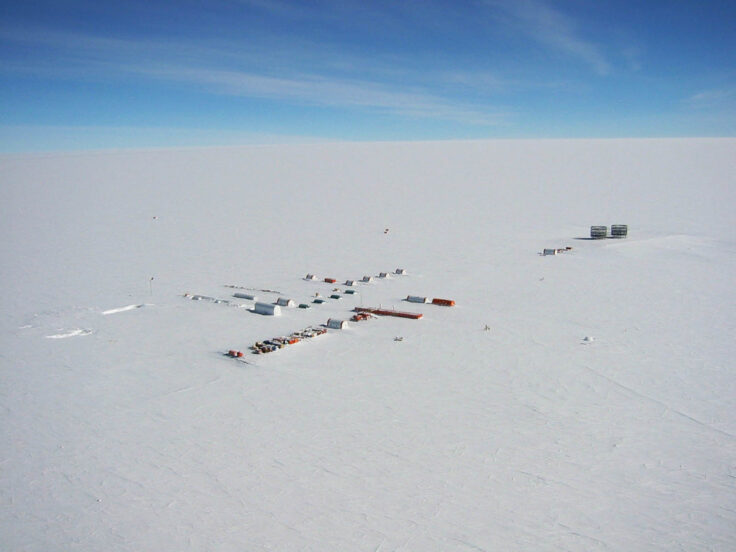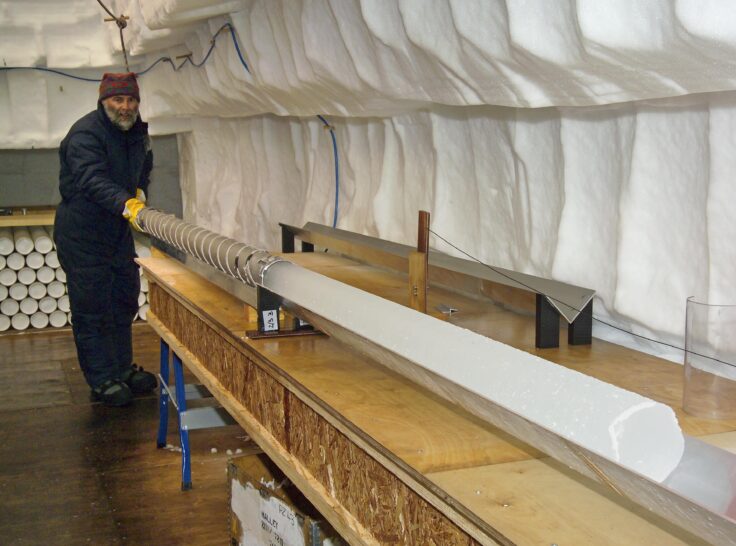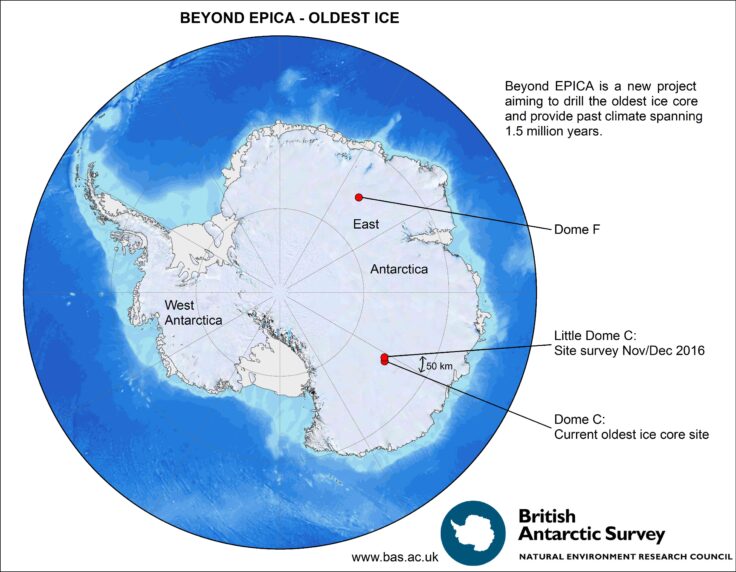First phase of project to collect 1.5 million years of climate data in Antarctica
A team of European scientists heads to East Antarctica this month to locate the oldest ice on Earth. The team is part of an EU-funded research consortium from ten European countries whose aim is to search for a suitable site to drill an ice core to capture 1.5 million years of Earth’s climate history. The project, Beyond EPICA – Oldest Ice (BE-OI), will answer important questions about big shifts in the past record of Earth’s climate.

By extracting air from the tiny bubbles trapped in the ice, researchers will understand how the atmosphere’s composition has changed over time.
Dr Robert Mulvaney, ice core scientist from British Antarctic Survey (BAS), the UK partner in Beyond EPICA – Oldest Ice, and involved in the site survey explains:
“In the early 2000s we drilled an ice core from Antarctica that gave us a climate record going back 800,000 years. Now we want to double the length of that record to investigate an important shift in Earth’s climate around one million years ago, when the planet’s climate cycle between cold glacial conditions and warmer interludes changed from being dominated by a 41,000-year pattern to a 100,000 year cycle.”
Understanding what controlled this shift in the Earth’s glacial cycles, and whether increasing carbon dioxide levels played a part, along with factors such as changes in the Earth’s rotational tilt, will help scientists to understand better how ice sheets will behave as the world warms.
Dr Mulvaney continues: “We need to understand the interaction between the Earth’s atmosphere and climate in very different conditions in the past if we are to be sure we can predict the future climate response to increasing greenhouse gases. There is no other place on Earth that retains such a long a record of the past atmosphere other than the Antarctic ice sheet, and it is tremendously exciting to be embarking now on the journey to recover this record.”

The team will survey several sites – at and near Little Dome C just 50 kms from the previous EPICA drill site located at the French-Italian research station Dome Concordia in East Antarctica – using radar towed behind a snow tractor, and drilling test boreholes, so they can determine the suitability of the site and the terrain at the bedrock beneath the ice.

The researchers, together with other BE-OI partners, will investigate the ice sheet’s thickness, its physical properties and the topography of the underlying bedrock at two different sites (Dome C and on the East Antarctic plateau at Dome F). Ice thickness is just a first indicator of past ice, as different snow accumulation, ice flow behaviour and the temperature at the bottom determine whether old ice remains near the base of the ice sheet.
“During previous studies we determined key regions where we expect the oldest continuous ice record on Earth” says Prof Olaf Eisen, project coordinator and glaciologist at the Alfred Wegener Institute (AWI). “Now we have to prove this and it is important that we learn as much as possible about deposition processes and the composition of the ice”, he explains.
Once a suitable drilling site is found, scientists will embark on a second phase multi-year project to extract an ice core from the surface to the bed at nearly 3km depth using traditional ice core drilling technology. Laboratories across Europe will analyse this ice to determine how the climate and the atmosphere have interacted over the past 1.5 million years.
Ends
Issued by the British Antarctic Survey Press Office:
Athena Dinar, Senior PR & Communications Manager, British Antarctic Survey, tel: +44 (0)1223 221 441; mobile: +44 (0)7909 008516; email: amdi@bas.ac.uk
Notes to Editors:
Dome C (75.10’S, 123.35’E) is one of the most hostile environments on the planet, and average annual temperatures are below -54 degrees Celsius. The deep field party at Little Dome C, supported by those at Concordia Station, will travel hundreds of kilometres by tractor and skidoo over featureless snow where blizzards are common.
The Beyond EPICA – Oldest Ice (BE-OI) consortium and its international partners unite a globally unique concentration of scientific expertise and infrastructure for ice-core investigations. BE-OI is an EU Coordination and Support Action (CSA). It delivers the technical, scientific and financial basis for a comprehensive plan to retrieve an ice core up to 1.5 million years old in a future project during the Beyond EPICA – Drilling Phase. This would be an important contribution for the future exploration of Antarctica and promises unique insights about climate and the global carbon fluxes. This knowledge will improve future prognoses of climate development with solid quantitative data and will allow establishing more targeted strategies, to cope with the societal challenges of global change.
BE-OI is the European Union contribution of an international effort costing 2.2 million Euros for a suitable site for ice-core deep drilling. The consortium takes care of the pre-site surveys for site selection around Dome C and Dome F, both potentially appropriate regions in East Antarctica. Other science consortia will investigate other regions under the umbrella of the International Partnerships in Ice Core Sciences.
Consortium members include:
- Alfred Wegener Institute, Helmholtz Centre for Polar and Marine Research (AWI, Germany), Coordination
- Institut Polaire Français Paul Émile Victor (IPEV, France)
- Agenzia nazionale per le nuove tecnologie, l’energia e lo sviluppo economico sostenibile (ENEA, Italy
- Centre National de la Recherche Scientifique (CNRS, France)
- British Antarctic Survey (NERC-BAS, Great Britain)
- Universiteit Utrecht – Institute for Marine and Atmospheric Research (UU-IMAU, Netherlands)
- Norwegian Polar Institute (NPI, Norway)
- Stockholms Universitet (SU, Sweden)
- Universität Bern (UBERN, Switzerland)
- Università di Bologna (UNIBO, Italy)
- University of Cambridge (UCAM, Great Britain)
- Kobenhavns Universitet (UCPH, Denmark)
- Université Libre de Bruxelles (ULB, Belgium)
- Lunds Universitet (ULUND, Sweden)
Beyond EPICA – Oldest Ice
In Antarctica internationally leading ice and climate scientists are looking for the oldest ice-core record on Earth. They want to find the place, where in Antarctica the ice core can be drilled which goes furthest back in Earth’s history, up to 1.5 million years. Such a core would allow to deciphering past processes in the climate system to improve prognoses for the future. “Beyond EPICA – Oldest Ice” is funded by a Coordination and Support Action of the European Commission’s Horizon 2020 programme (grant agreement number 730258) with 2.2 Million Euros. The project runs from October 2016 to September 2019 and brings together experts of 14 institutions from ten European countries, coordinated by the German Alfred Wegener Institute Helmholtz Centre for Polar and Marine Research.
